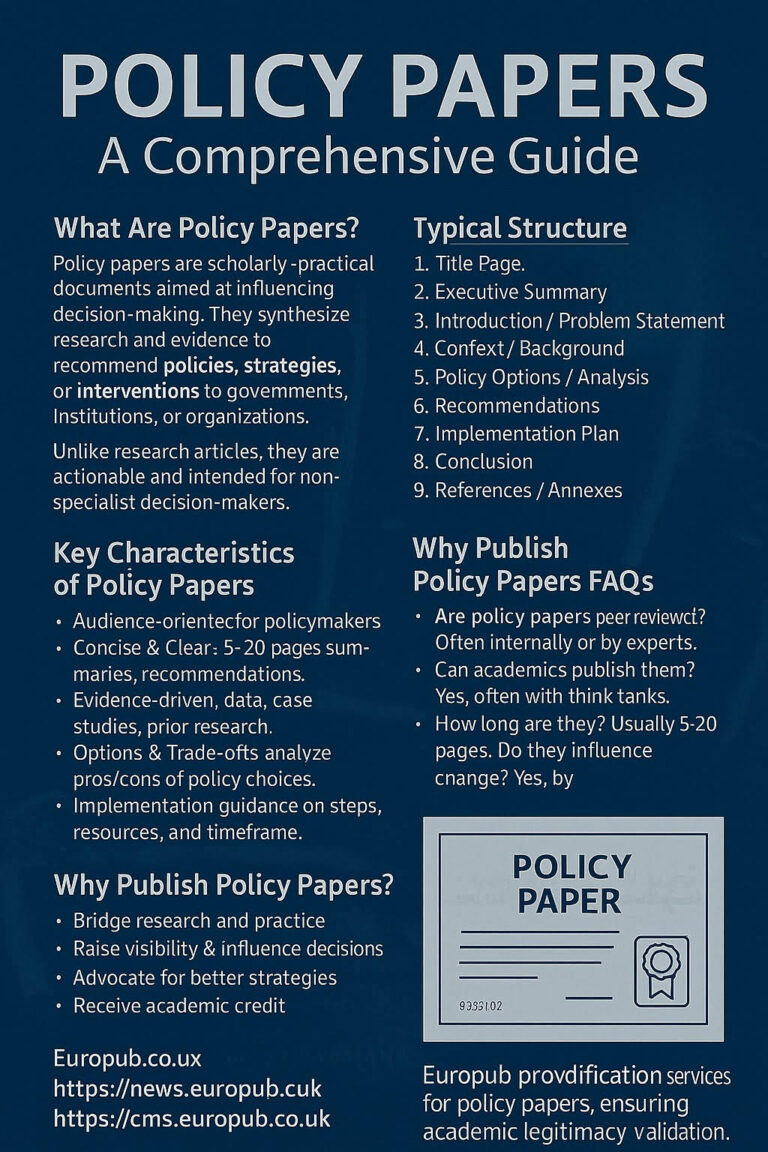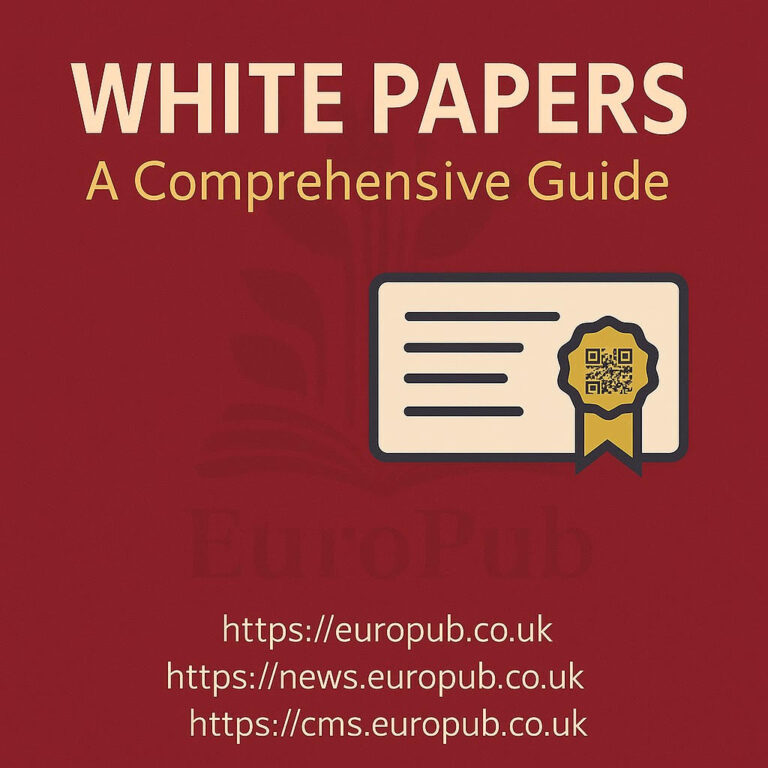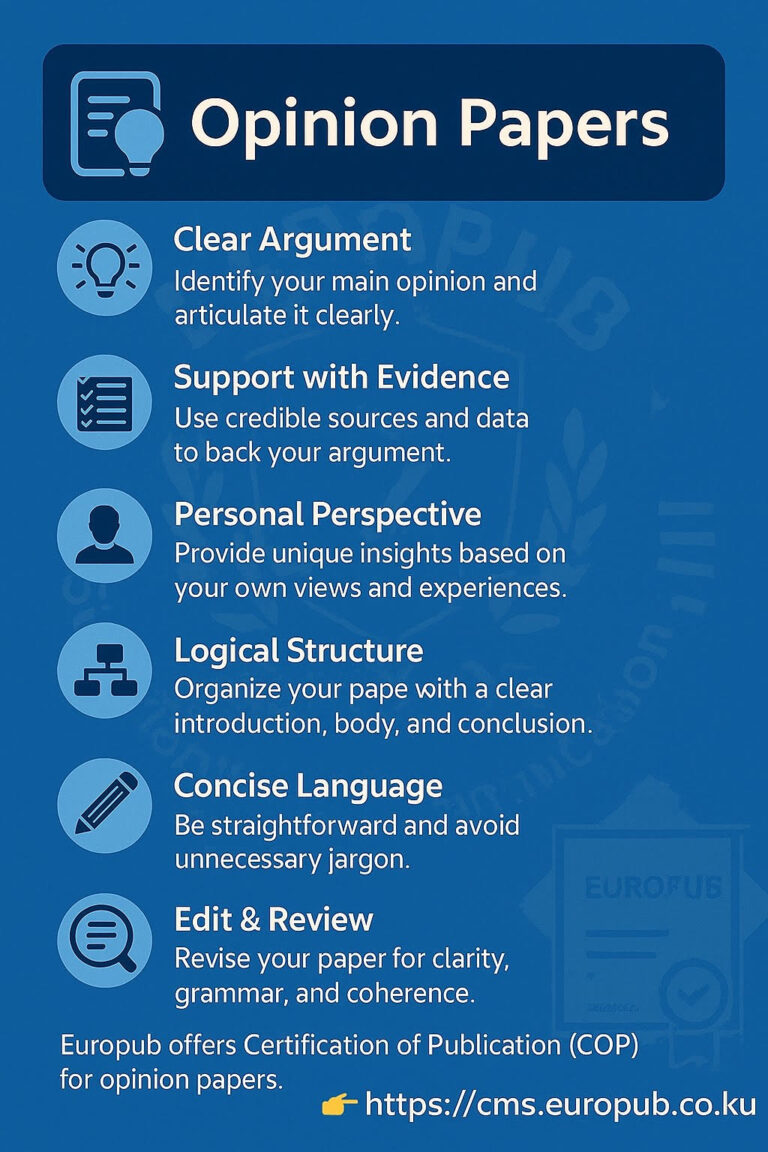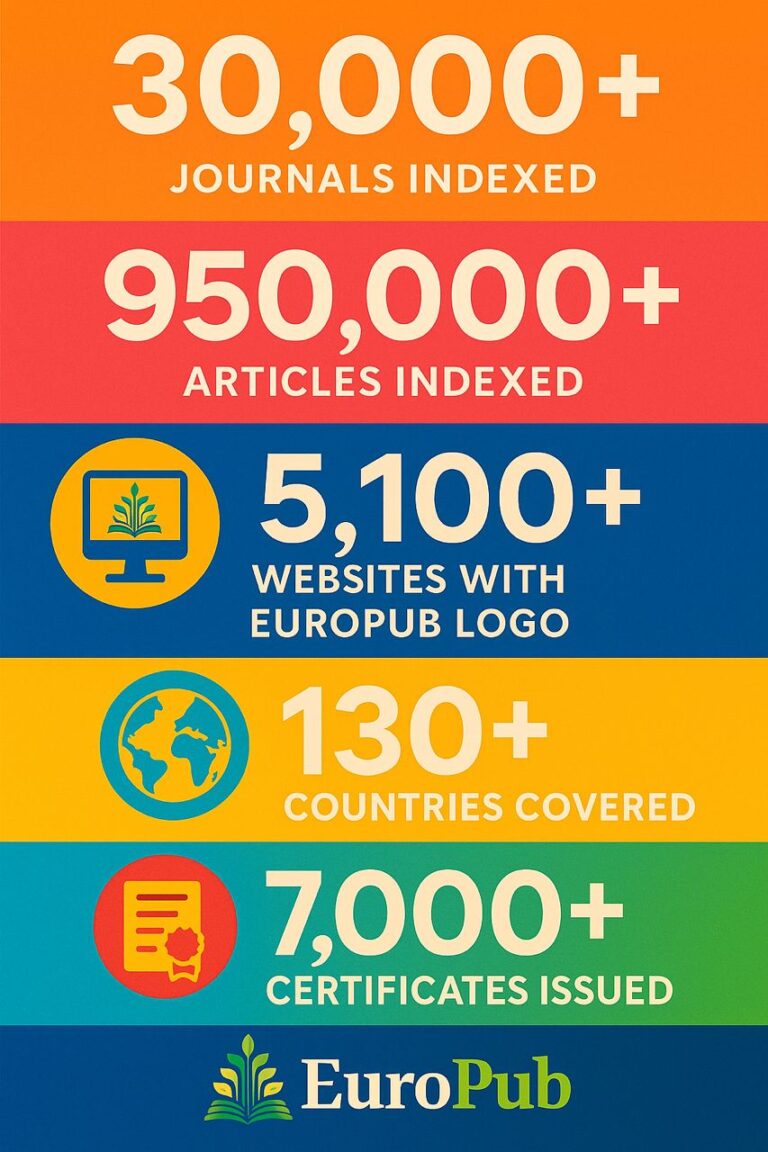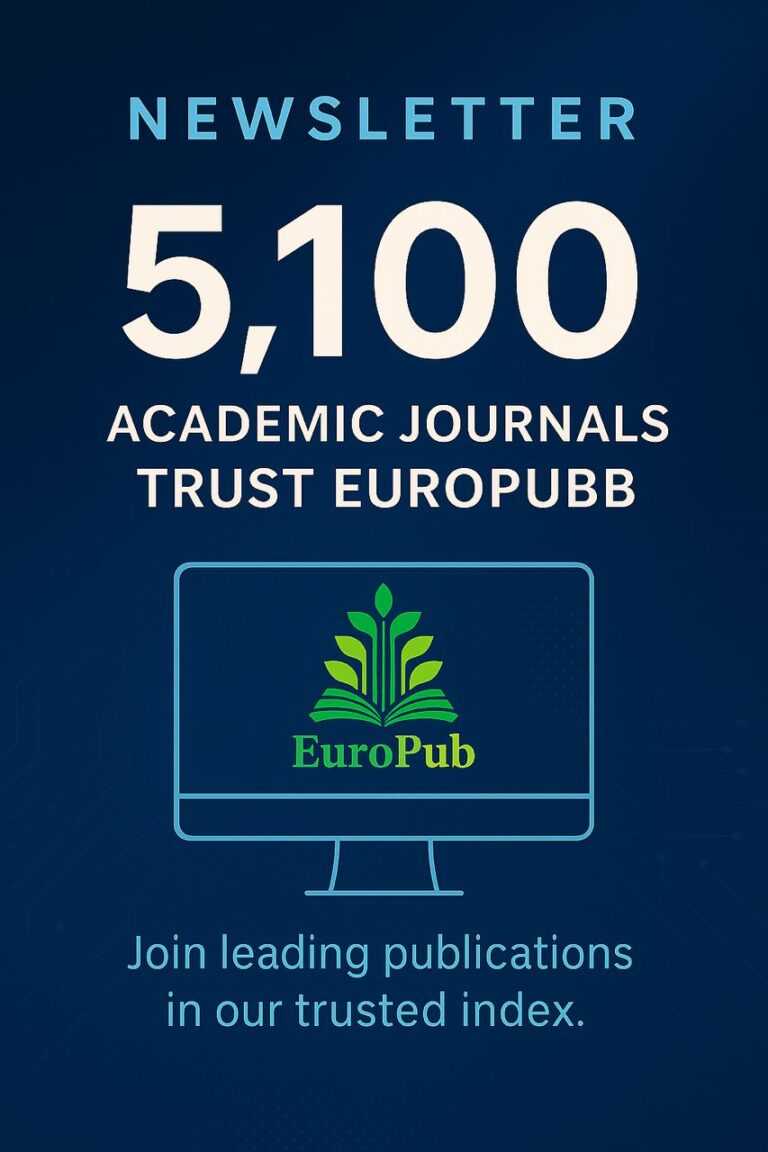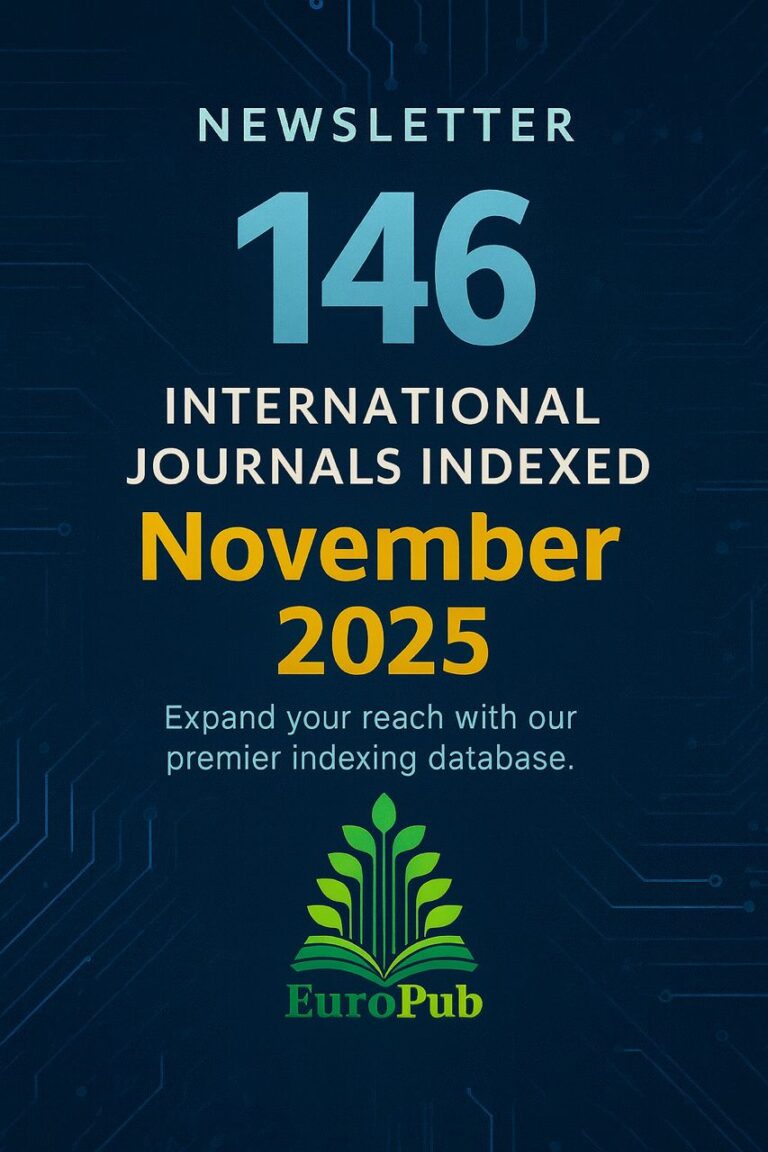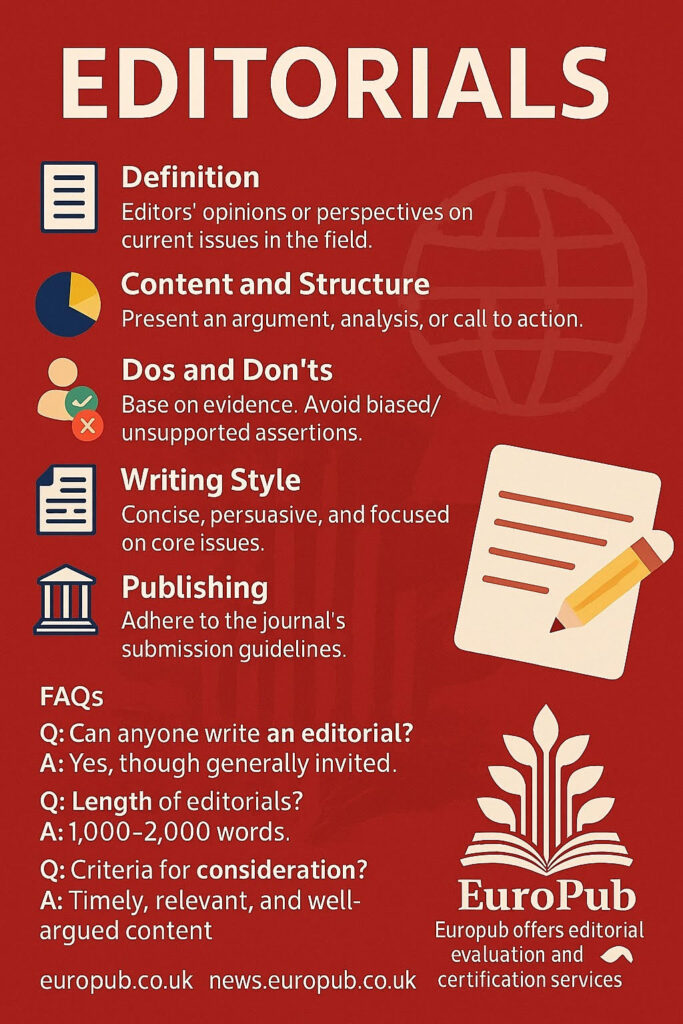
Editorials are scholarly opinion pieces usually written by editors, guest editors, or invited experts of a journal. They provide critical perspectives, highlight issues, set agendas, or comment on ongoing debates in research and academia. Unlike research articles, they are not based on original experimental data but on expert interpretation and analysis.
 What are Editorials?
What are Editorials?
- Definition: Short, opinion-driven articles that express the views of the editorial board or an invited expert.
- Purpose: To guide readers, set the tone of the issue, or spark academic dialogue.
- Audience: Researchers, policymakers, professionals, and the broader academic community.
 Key Characteristics
Key Characteristics
- Concise Length – Usually 800–1,500 words.
- Opinion & Insight – Based on expertise and judgment rather than raw data.
- Timely & Relevant – Addresses pressing topics in research, ethics, or policy.
- Journal Identity – Often reflects the vision of the journal.
- Non-anonymous – Authorship is usually clearly stated.
 Common Types of Editorials
Common Types of Editorials
- Commentary Editorials: Provide expert views on a new study or trend.
- Policy Editorials: Discuss the impact of research on regulation or policy.
- Thematic Editorials: Introduce or highlight special issues of a journal.
- Advocacy Editorials: Promote an ethical stance or highlight injustices.
 Benefits of Editorials
Benefits of Editorials
- Establish thought leadership.
- Increase visibility and credibility of both the journal and the author.
- Influence public debates and academic practices.
- Serve as educational tools for early-career researchers.
 Extended FAQs on Editorials
Extended FAQs on Editorials
Q1: Do editorials undergo peer review?
 Sometimes. Many are reviewed internally by the editorial board, but not always sent for external peer review.
Sometimes. Many are reviewed internally by the editorial board, but not always sent for external peer review.
Q2: Who usually writes editorials?
 Editors-in-chief, associate editors, or invited scholars with expertise in the topic.
Editors-in-chief, associate editors, or invited scholars with expertise in the topic.
Q3: How are editorials different from commentaries?
 Commentaries critique or expand on existing studies, while editorials often provide broader perspectives on the journal’s focus or field trends.
Commentaries critique or expand on existing studies, while editorials often provide broader perspectives on the journal’s focus or field trends.
Q4: Do editorials count as academic publications?

 Yes, they are indexed and citable, though they are not considered original research.
Yes, they are indexed and citable, though they are not considered original research.
Q5: Can early-career researchers write editorials?
 Usually invited, but many journals encourage rising scholars to contribute guest editorials.
Usually invited, but many journals encourage rising scholars to contribute guest editorials.
Q6: How do editorials impact journals?
 They enhance the academic voice and identity of the journal.
They enhance the academic voice and identity of the journal.
Q7: Are editorials published in all fields?
 Yes, especially in medicine, social sciences, law, and policy research.
Yes, especially in medicine, social sciences, law, and policy research.
Q8: What style should an editorial follow?
 Clear, persuasive, and well-structured – more like a professional essay than a technical report.
Clear, persuasive, and well-structured – more like a professional essay than a technical report.
Q9: Are editorials influential in policymaking?

 Yes, many editorials in high-impact journals (e.g., The Lancet, Nature, Science) shape academic and political debates.
Yes, many editorials in high-impact journals (e.g., The Lancet, Nature, Science) shape academic and political debates.
Q10: Can editorials be rejected by journals?
 Yes, if they lack relevance, rigor, or alignment with the journal’s theme.
Yes, if they lack relevance, rigor, or alignment with the journal’s theme.
Q11: Do editorials increase citations?
 Yes, particularly if they address current hot topics.
Yes, particularly if they address current hot topics.
Q12: What makes an editorial strong?
 Novel insight, evidence-backed arguments, and a call to action.
Novel insight, evidence-backed arguments, and a call to action.
Q13: Can editorials criticize policies or governments?
 Yes, many editorials openly critique decisions when they conflict with scientific or ethical standards.
Yes, many editorials openly critique decisions when they conflict with scientific or ethical standards.
Q14: Are editorials free to publish?
 Typically yes, as they are by invitation, though some open-access journals may charge APCs.
Typically yes, as they are by invitation, though some open-access journals may charge APCs.
Q15: How long does it take to write an editorial?
 Generally shorter than research articles – 1 to 3 weeks if the author is experienced.
Generally shorter than research articles – 1 to 3 weeks if the author is experienced.
 Useful Links
Useful Links
 Europub Links:
Europub Links:
 Europub Certification Note
Europub Certification Note
Europub provides certificates of editorial authorship, contribution, and recognition. Authors and editors can validate their roles officially through the Europub Certificate Management System.
 Apply here: https://cms.europub.co.uk
Apply here: https://cms.europub.co.uk



